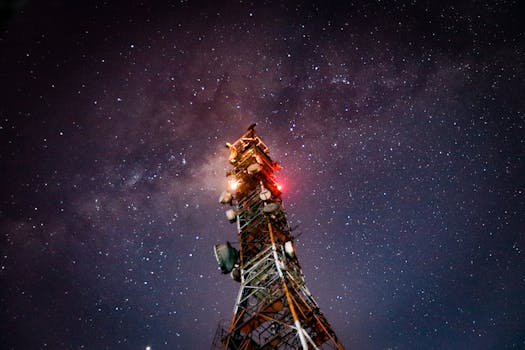
MEO Satellites: Revolutionizing Global Communication with Medium Earth Orbit Technology
MEO satellites, or Medium Earth Orbit satellites, are a type of satellite that operates in an orbit between 2,000 and 36,000 kilometers above the Earth’s surface. This orbit is higher than Low Earth Orbit (LEO) satellites but lower than Geostationary Earth Orbit (GEO) satellites. MEO satellites are revolutionizing the way we communicate globally, offering faster and more reliable connections than traditional GEO satellites.
The focus of MEO satellites is to provide a balance between the low latency of LEO satellites and the high capacity of GEO satellites. By operating in a medium earth orbit, MEO satellites can provide a wider coverage area than LEO satellites while also offering lower latency than GEO satellites. This makes them ideal for applications such as satellite communications, navigation, and Earth observation.
How MEO Satellites Work
MEO satellites work by transmitting and receiving signals to and from Earth stations or other satellites. They use a combination of antennas, transponders, and other equipment to amplify and re-transmit signals. MEO satellites are typically equipped with multiple beams, which allow them to provide coverage to different regions of the Earth. They can also be used to provide connectivity to remote or underserved areas, where traditional communication infrastructure is lacking.
MEO satellites have several advantages over traditional GEO satellites. They have a lower latency, which means that signals take less time to travel between the satellite and the Earth station. This makes them ideal for applications such as voice and video communications, where low latency is critical. MEO satellites also have a higher capacity than LEO satellites, which means they can handle more traffic and provide more bandwidth to users.
Applications of MEO Satellites
MEO satellites have a wide range of applications, including satellite communications, navigation, and Earth observation. They are used to provide broadband internet access to remote or underserved areas, as well as to support voice and video communications. MEO satellites are also used for navigation purposes, such as providing location information and timing signals. They can also be used for Earth observation, such as monitoring weather patterns, tracking natural disasters, and monitoring environmental changes.
One of the most significant applications of MEO satellites is in the provision of satellite communications. They are used to provide connectivity to areas where traditional communication infrastructure is lacking, such as in rural or remote areas. MEO satellites can also be used to provide backup communications in case of disasters or outages, ensuring that critical communications are maintained.
Future of MEO Satellites
The future of MEO satellites looks promising, with several new constellations and systems being developed. One of the most significant developments is the launch of new satellite constellations, such as the O3b and Iriss constellations. These constellations are designed to provide high-speed, low-latency connectivity to areas around the world, and are expected to revolutionize the way we communicate globally.
In addition to new constellations, there are also several new technologies being developed to improve the performance and capabilities of MEO satellites. These include advances in antenna design, propulsion systems, and power generation. These technologies are expected to enable the development of more powerful and efficient MEO satellites, which will be able to provide even faster and more reliable connections.



